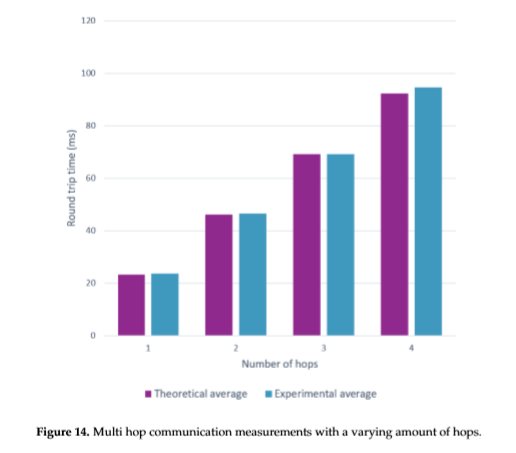There’s recent new research on The Bluetooth Mesh Standard: An Overview and Experimental Evaluation (pdf) by Mathias Baert, Jen Rossey, Adnan Shahid ID and Jeroen Hoebeke of Ghent University.
The paper explains how the Bluetooth Mesh Standard came about to address the problem of the variety of BLE meshing solutions that were not interoperable. It includes a great introduction to Bluetooth LE and Mesh with some statistical and experimental insights into mesh performance.
The authors explain how the choice of the use of advertising advertising at 100% duty cycle for lower end-to-end delay has degraded the low energy advantage of BLE advertising thus limiting the usefulness in power (battery) sensitive applications.

The paper contains some useful insights:
- The back off mechanism, used to decrease the chance of mesh network collisions, contributes most to the communication delay. However, as they identify, it’s this mechanism that provides reliability and scalability in larger networks. Disabling the backoff mechanism decreases the delay but makes the network less scaleable and robust.
- Making the network more dense, has a positive effect on the round trip time (RTT). However too a dense network leads to more collisions.
- Increasing the number of hops needed, making the network more sparse, has a negative effect on the RTT.
“It is clear that there are a lot of factors influencing the communication flows within a Bluetooth Mesh network, requiring more advanced management mechanism for optimizing the performance of the mesh network.”
However, the research had some limitations. Noise was simulated by introducing non-mesh beacons advertising every 20ms. This wasn’t very realistic given that most beacons advertise in the range 100ms to 1000ms. Re-transmit time was considered that complicated calculations – especially as re-transmit is application specific. It wasn’t mentioned that in many mesh sensing applications, unacknowledged messages are acceptable such that there’s no re-transmit. Also, the affect of other mesh network traffic, on the round trip time, wasn’t considered – only one mesh transmission at a time was considered.
Read about Beacons and the Bluetooth Mesh